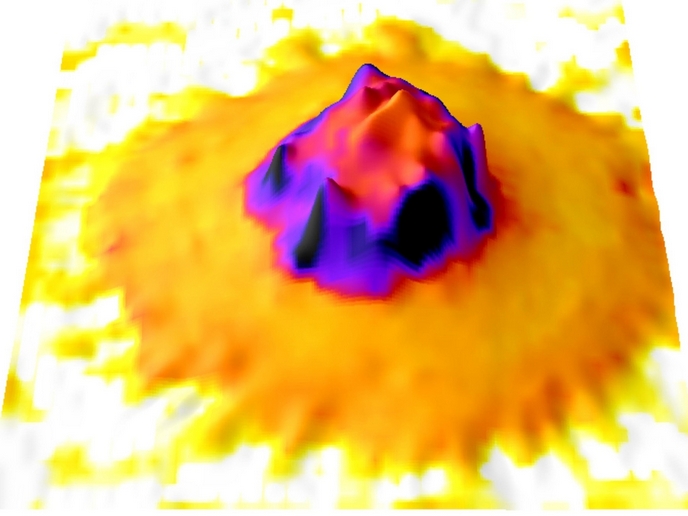The forces that power immune defences
The immune system’s ability to detect and respond to injury or infection begins with leucocytes, or white blood cells, patrolling the vascular walls in search of inflammation. This process starts with leucocytes reducing speed as they flow through the bloodstream. They can then become activated, adhere firmly to the vascular wall and migrate to sites of injury or inflammation. Leucocyte adhesion to the vascular wall involves several stages and exposes the cells to mechanical forces over time, from microseconds to several minutes. Understanding the forces implicated in the leucocyte adhesion cascade is central for deciphering the fundamental physics behind immune response mechanisms.
Combined nanotools for force measurement in leucocytes
To fully understand the leucocyte adhesion process, the ERC-funded MechaDynA project aimed to develop a comprehensive approach bridging these time scales and spatial resolutions. The research team adapted two cutting-edge nanotools, high-speed force spectroscopy (HS-FS) and acoustic force spectroscopy (AFS) to measure, directly on living cells, the mechanics of all involved cellular components over the widest range of timescales. Derived from atomic force microscopy, HS-FS employs ultra-small cantilevers to measure mechanical properties and binding strengths of individual molecules, such as proteins or DNA, at extremely short timescales down to microseconds. This approach enabled the researchers to explore rapid events critical to leucocyte adhesion. AFS complements the time scales accessible through HS-FS. Using acoustic waves to trap and apply forces to hundreds of particles or suspended cells in parallel, it enables long-duration measurements that last hours.
Experimentation on living cells
One of the project’s significant achievements was the adaptation of HS-FS and AFS to work directly on living cells, enabling detailed exploration of leucocyte mechanics and adhesion. “By combining these tools with advanced optical microscopy, we achieved force measurements on living cells with access to an unprecedented range of time scales,” emphasises MechaDynA principal investigator Felix Rico. Part of the project revealed that adhesion is linked to mechanical stiffening in the leucocyte cells. Interestingly, stiffening seems to persist even after the adhesion is removed, highlighting a previously unknown aspect of cellular mechanics. Overall, the MechaDynA findings improve our understanding of the mechanical forces influencing biological processes.
Future applications
The success of MechaDynA in adapting and applying HS-FS and AFS for the investigation of leucocytes marks a significant milestone in biophysical research. The project’s next steps include extending these methods to other cell systems, such as circulating tumour cells, which resemble leucocytes travelling through the bloodstream before metastasising to distant organs. Exploring the mechanics of such cells could lead to breakthroughs in cancer diagnosis and treatment. Additionally, the MechaDynA nanotools hold promise for studying other biological systems, such as virus cell interactions, which could advance our understanding of viral infections and inform the development of antiviral therapies. The potential for patenting these nanotools underscores their innovative nature and applicability across multiple disciplines and opens new avenues for addressing pressing biomedical challenges. Furthermore, the PyFMLab open-source software package developed during the project offers a standardised solution for viscoelastic characterisation of biological samples.
Keywords
MechaDynA, forces, high-speed force spectroscopy (HS-FS), acoustic force spectroscopy (AFS), leucocyte adhesion, mechanical properties, biophysics



